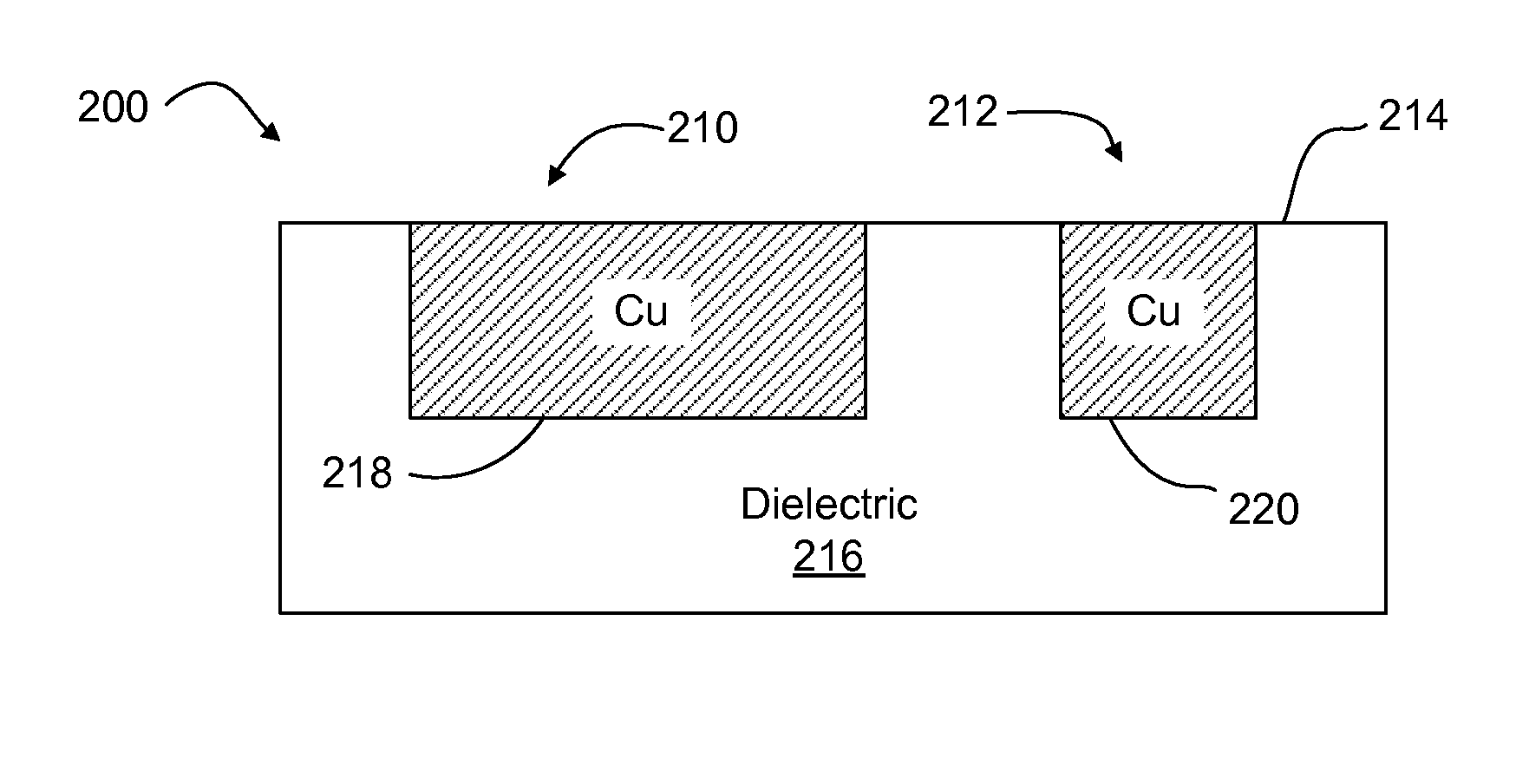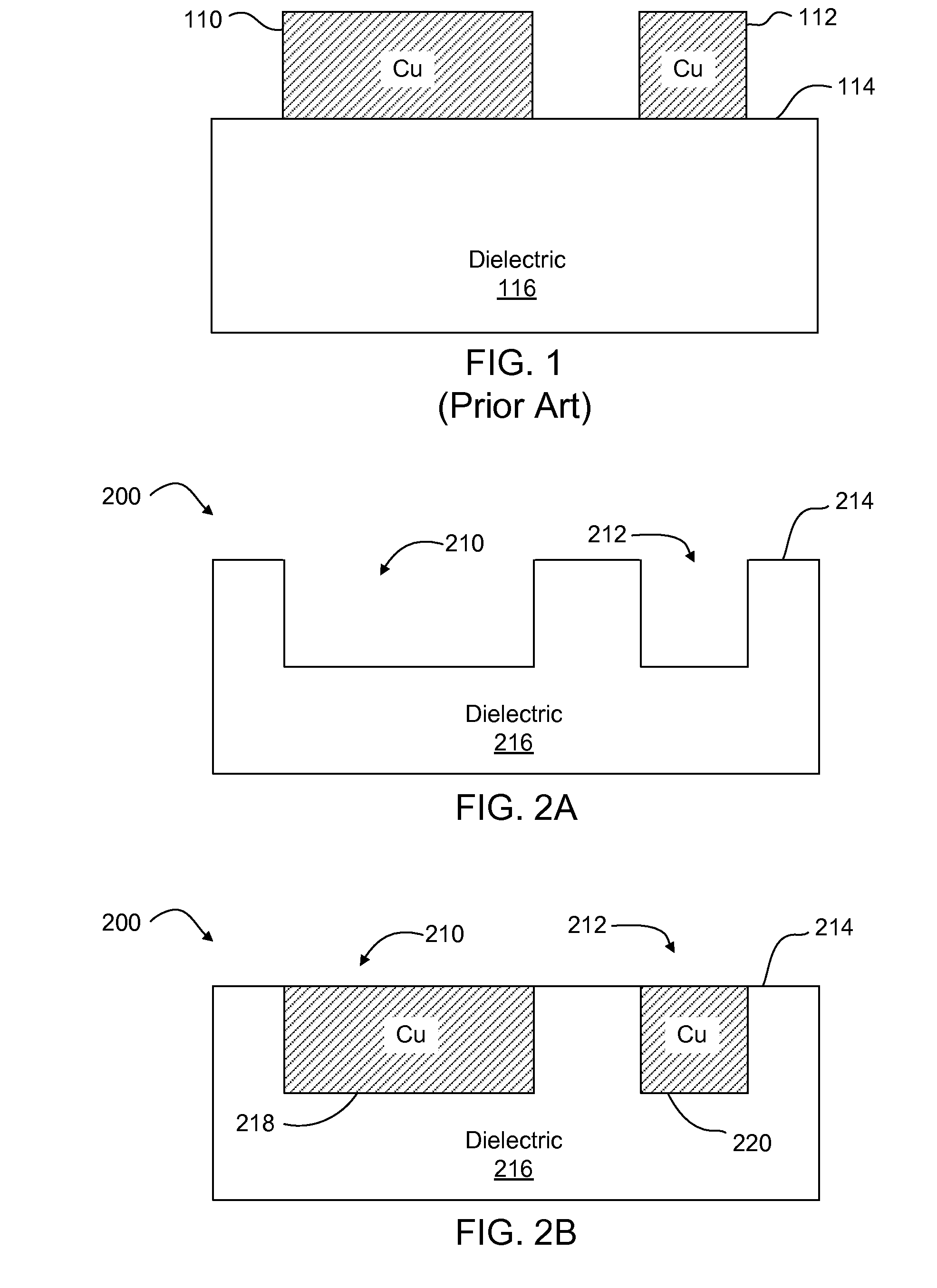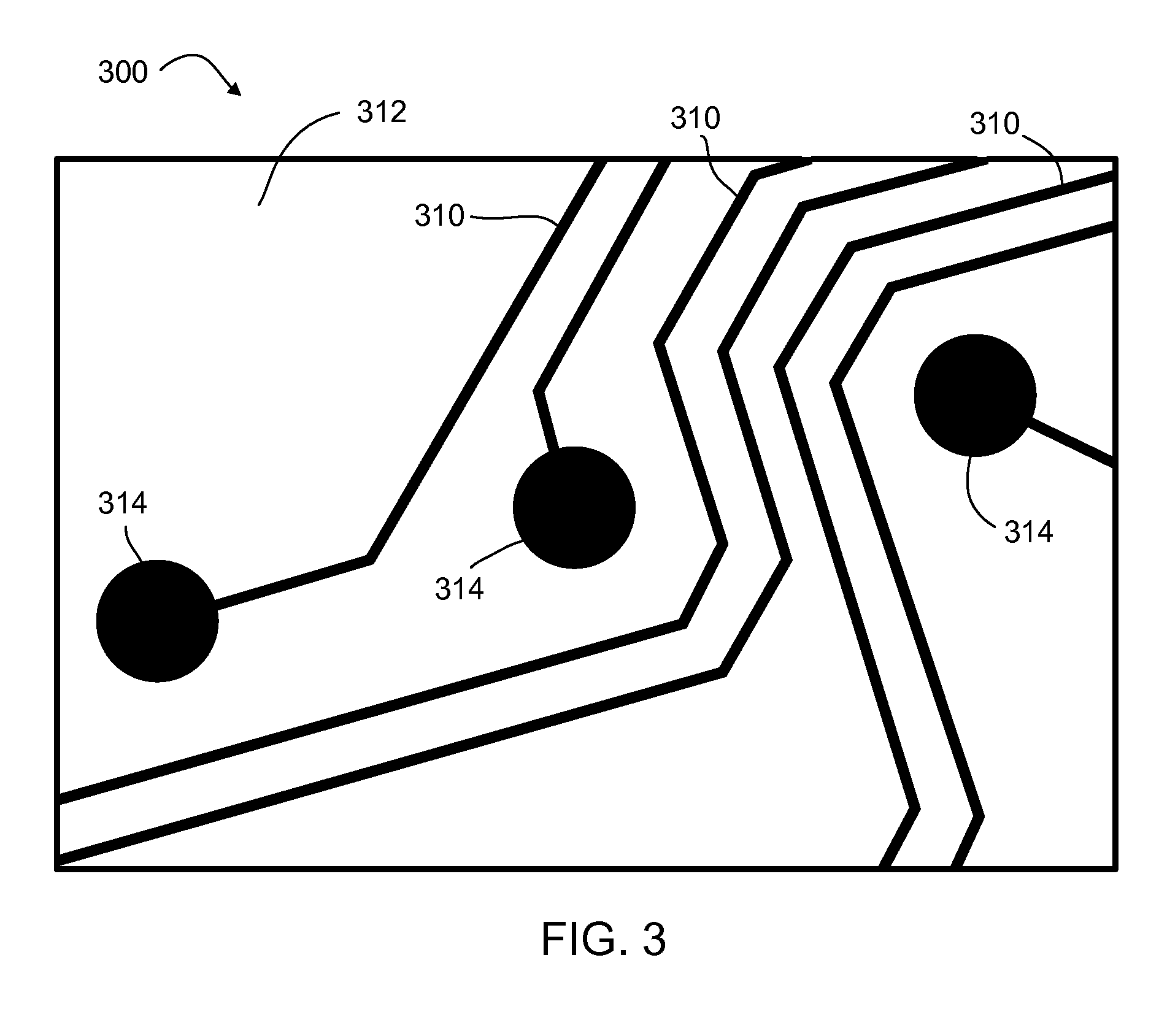Laser direct ablation with picosecond laser pulses at high pulse repetition frequencies
a laser pulse and high pulse repetition frequency technology, applied in the field of laser micromachining, can solve the problems of affecting throughput, lack of productive and cost effective manufacturing techniques suitable for high-volume production, and known methods of dielectric removal, etc., to achieve the effect of effective lda, sufficient pulse overlap, and more efficient and cleaner material removal
- Summary
- Abstract
- Description
- Claims
- Application Information
AI Technical Summary
Benefits of technology
Problems solved by technology
Method used
Image
Examples
Embodiment Construction
I. Overview
[0023]Systems and methods provide productive processing (e.g., using a vector scan approach) having a high throughput in a laser direct ablation (LDA) application. High-speed beam positioning and high pulse repetition frequencies (PRFs) provide sufficient overlap of successive laser pulses to control the uniformity and features of kerfs cut in a dielectric material. Known plating processes may then be used to form electrical paths in the kerfs with desired signal propagation characteristics (e.g., impedance, resistance, and capacitance).
[0024]In certain embodiments, a high-speed beam positioning scheme is used in combination with a mode locked laser. As beam positioning technology advances, the pulse repetition rate of the laser source becomes a limiting factor. For example, with a 10 μm spot size at a workpiece, a laser source running at 10 kHz pulse repetition frequency (PRF), and a velocity of the laser beam with respect to a surface of the workpiece higher than 100 mm...
PUM
| Property | Measurement | Unit |
|---|---|---|
| velocity | aaaaa | aaaaa |
| velocity | aaaaa | aaaaa |
| velocity | aaaaa | aaaaa |
Abstract
Description
Claims
Application Information
 Login to View More
Login to View More - R&D
- Intellectual Property
- Life Sciences
- Materials
- Tech Scout
- Unparalleled Data Quality
- Higher Quality Content
- 60% Fewer Hallucinations
Browse by: Latest US Patents, China's latest patents, Technical Efficacy Thesaurus, Application Domain, Technology Topic, Popular Technical Reports.
© 2025 PatSnap. All rights reserved.Legal|Privacy policy|Modern Slavery Act Transparency Statement|Sitemap|About US| Contact US: help@patsnap.com



